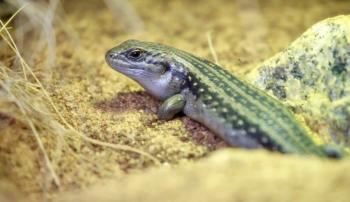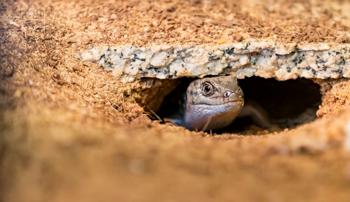Guthega Skink
The Guthega Skink is listed as endangered nationally, and as critically endangered in Victoria, where it is only found on the Bogong High Plains.
Other populations occur in Kosciuszko National Park, NSW; however, these two populations have not been connected for millions of years. The burrowing lizards are a native alpine species that occur at the highest elevations in the country and hibernate under the snow for five months of the year. They inhabit alpine tussock grasslands, heathlands, and snow gum woodlands. The female gives birth to one or two live young, and they can live for more than 15 years.

Major threats
Habitat destruction and disturbance from development is a major threat to Guthega Skink populations. Likewise, the effects of climate change on sensitive alpine environments and increasing bushfire frequency and severity can expose skinks to predators, and result in unsuitable vegetation changes.

The plan for fighting extinction
A conservation breeding program was established for the species in 2013 at Healesville Sanctuary’s Skink Chalet.
In 2024, specialist keepers bred the first Guthega Skinks of mixed genetic origins from both the Kosciusko National Park and Victorian Alps populations. Once released to the wild, these ‘genetic rescue’ skinks are likely to have greater resilience to threatening processes such as climate change.
Our Partners
- Snowline Ecology
How you can help
- Raise community awareness and support for the Guthega Skink.
- Visit our zoos to support our fighting extinction work.
- Donate if you can. As a not-for-profit organisation, all donations go towards our conservation work.
- Discover more about local conservation events and join the growing number of wild activists taking action for local wildlife.
Is your classroom learning about the Guthega Skink?
Browse through our collection of animal teaching and learning resources for students. These include animal toolkits, e-books, Ask a Zoo Expert resources, video showcases and real-world examples to support the VCE Study Design.
